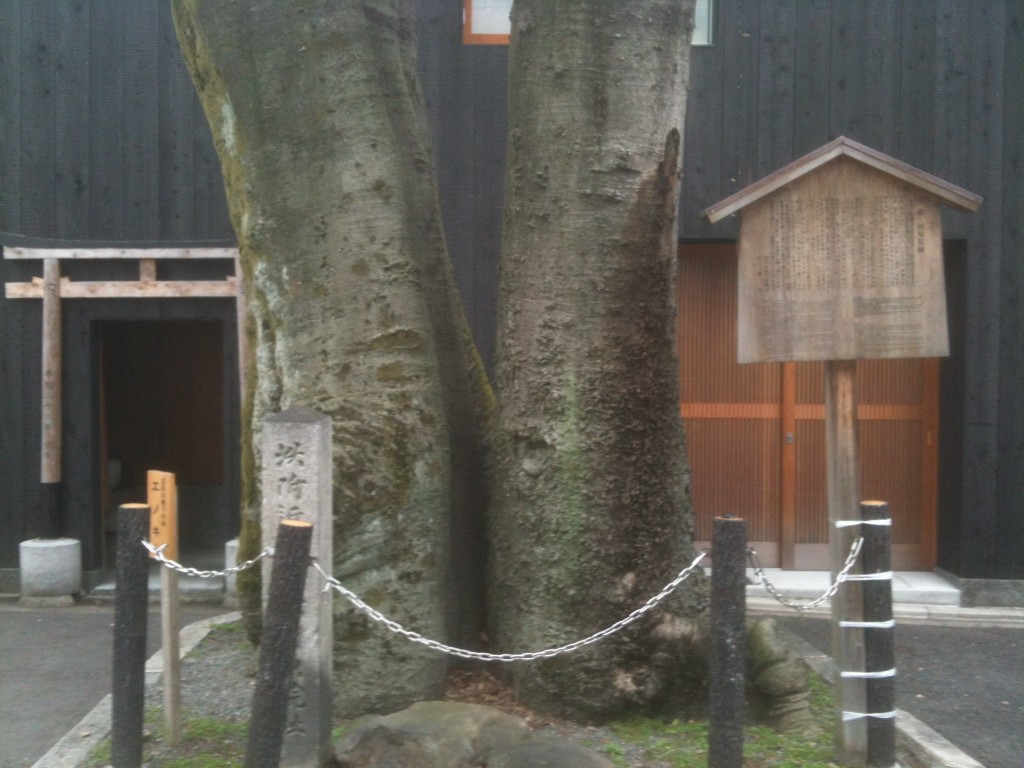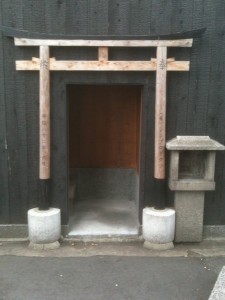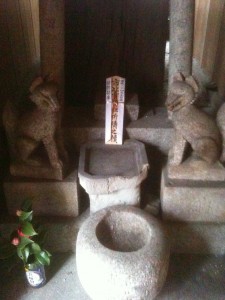
Site of the Heian-era palace of Minamoto no Toru (882-895)
One of the delights of Kyoto is coming unexpectedly across places of historical import.

This evening on the way home I passed a torii affixed to a building with a small dark opening. A nearby noticeboard announced that it was the site of a former palace that belonged to a nobleman called Minamoto no Toru, son of emperor Saga. He’s said to be the model for the hero of the world’s first novel, The Tale of Genji (c.1004).
The site on the banks of the Kamogawa by Gojo Bridge once hosted Toru’s retirement villa, called Kawara-no-in. It was a huge affair befitting a former prime minister (sadaijin), with water from the river feeding a pond garden and villas of exquisite beauty amidst wooded surrounds. Here paraded the aristocratic aesthetes of Heian times.

The hackleberry tree in the picture above is thought to be a sole survivor from the original woodland. It was selected as ‘Tree of Honor of Shimogyo Ward’ in 2000 and serves now as the sacred tree of the small shrine established in the building behind, dedicated to Enoki Daimyojin (deity of hackleberry trees).
I took a peek inside and found a small shrine with guardian foxes and an ofuda as the central focus. It’s relatively new as I used to live in the neighbourhood and don’t remember seeing it then. So it’s interesting to think about how it came about, no doubt motivated by local pride in the historical association.
In other countries a memorial plaque would suffice to mark the place, but here a spiritual dimension is attached. It’s a trait of Shinto to mark great events of the past, and you could say that it is history which is being sanctified here, or rather literary history. For those like myself who love the romance of place, it invests the notion of being a literary pilgrim with real meaning. In paying respects to the hackleberry tree, one is expressing gratitude for Murasaki’s immortal creation.

Leave a Reply